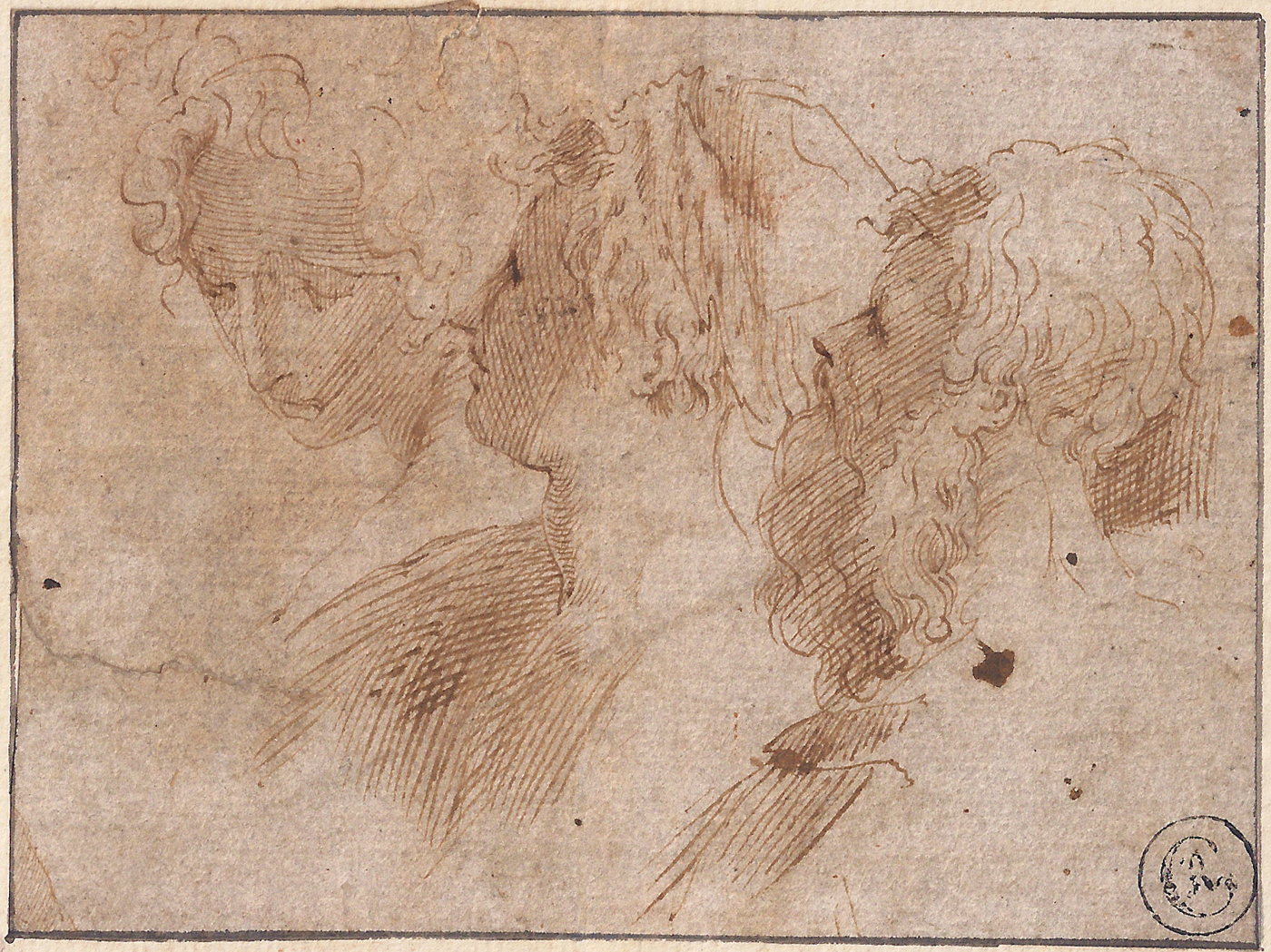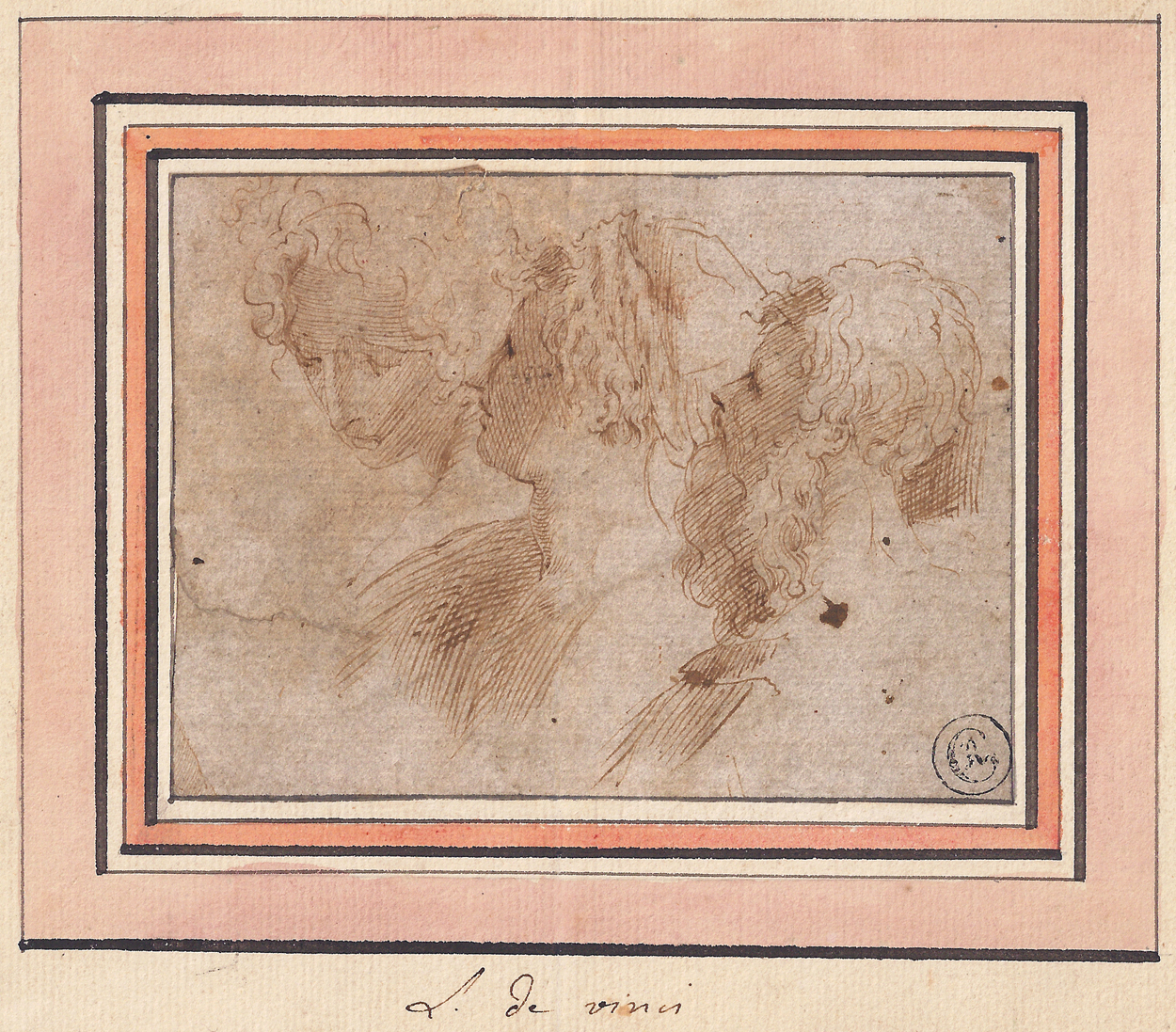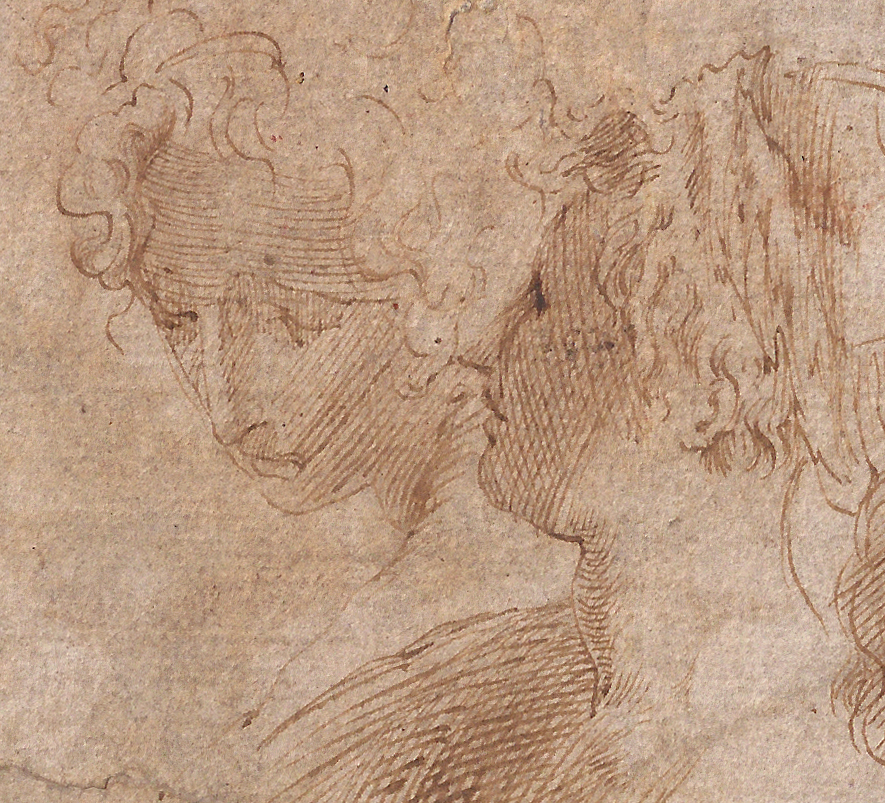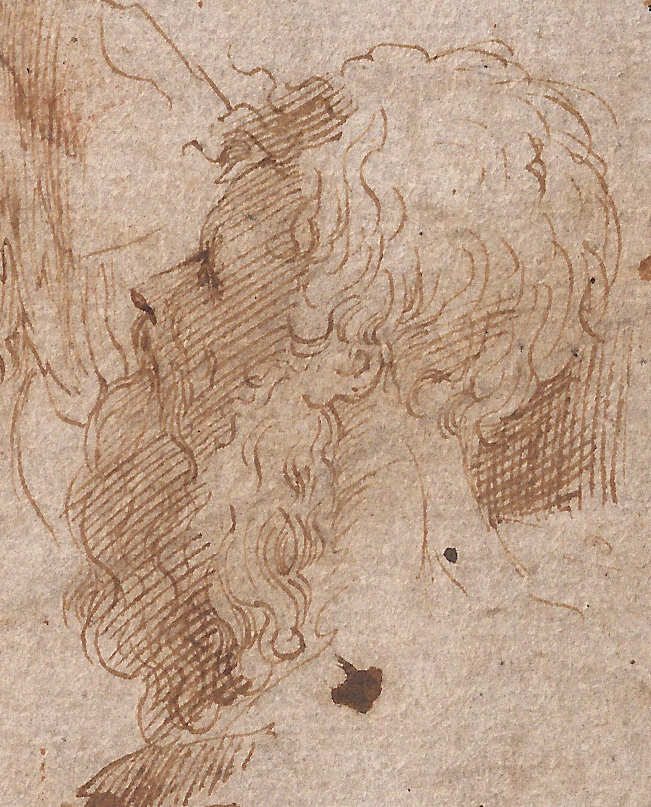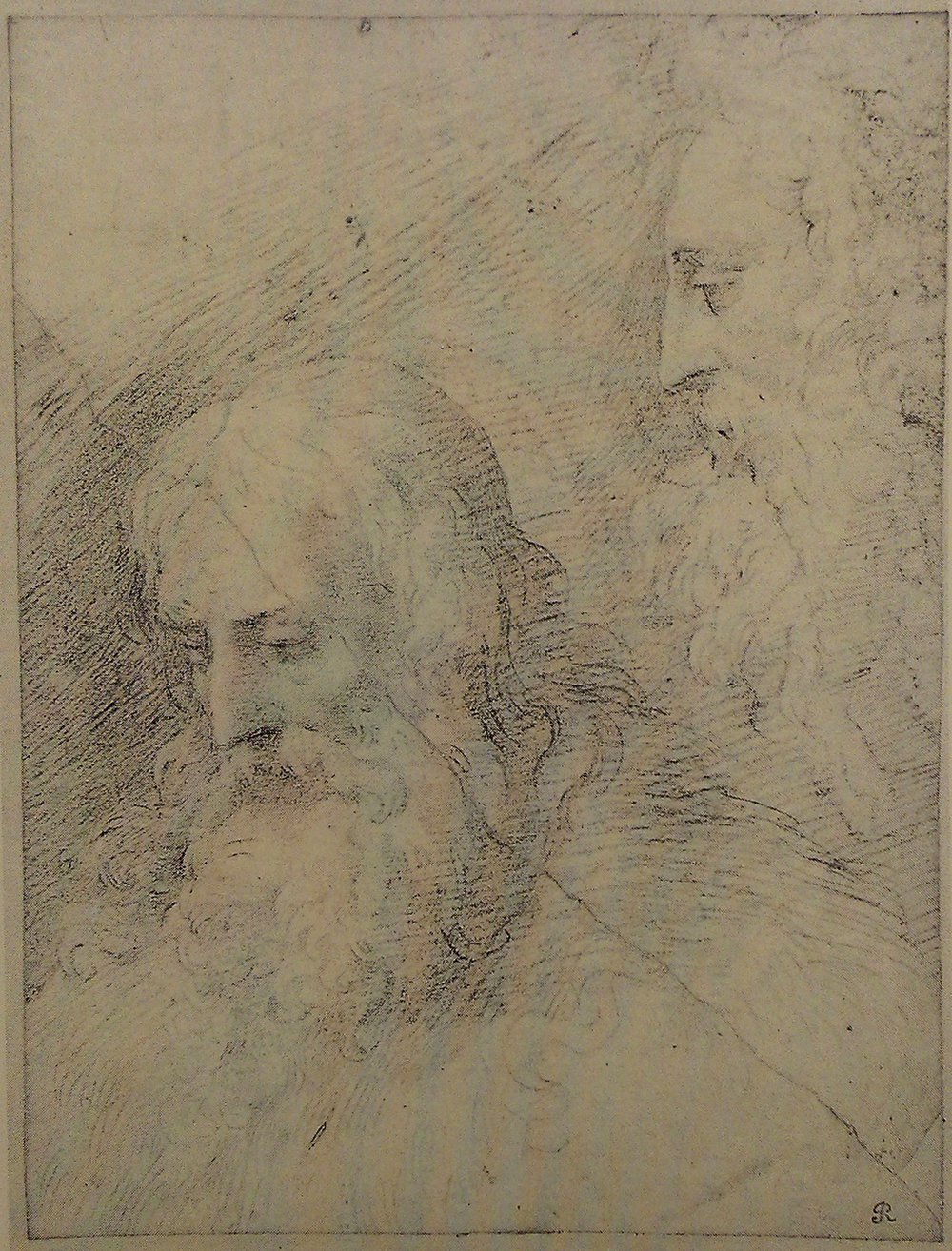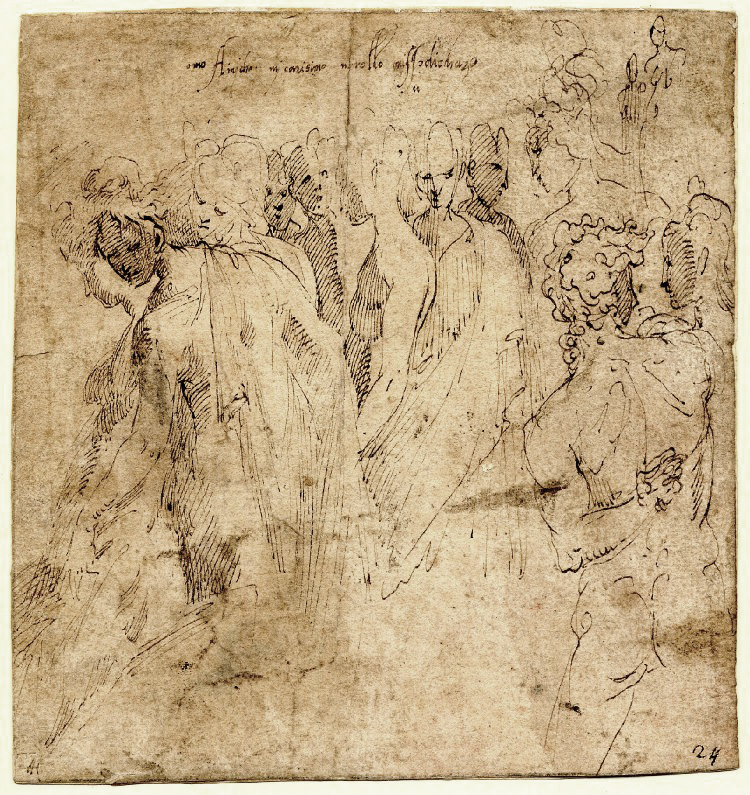JACOPO ZANGUIDI, CALLED BERTOIA (Parma 1544 – 1573 Parma)
Jacopo Zanguidi, called Bertoia (Parma 1544 – 1573 Parma)
Three Studies of Heads
Pen and brown ink, 96 x 129 mm (3.8 x 5.1 inch); laid down onto an 18th- or 19th-century collector’s mount with framing lines in black in and orange and pink wash
Inscribed ‘L. de Vinci’ (pen and brown ink, in an 18th- or 19th-century hand, on the mount) and ‘From the Crozat & Richardson Collts’ (pencil, verso of the mount)1
Provenance
~ Richard Cosway (1742–1821), London (Lugt 628)
~ Anonymous sale, Sotheby’s, New York, 25 January 2006, lot 44, repr.
~ Luigi Gallacci, Paris, until 2015
Literature
Alessandra Bigi Iotti and Giulio Zavatta, ‘Su alcuni disegni di Girolamo Mirola’, Il Carrobbio, 2011, p. 85, repr. (as Girolamo Mirola)
***
Jacopo Bertoia spent most of his brief career in the service of the Farnese family, working for Cardinal Alessandro Farnese in Rome, and for his nephew Ottavio Farnese in Parma.2 Farnese patronage produced Bertoia’s most important works – the decorations of the Villa Farnese at Caprarola, where he replaced Federico Zuccaro as capomaestro, and the frescoes in the Oratorio del Gonfalone in Rome and the Palazzo Ducale in Parma. Between 1569 and his premature death in 1573, Bertoia decorated five rooms at the Villa Farnese in Caprarola, commissioned by Cardinal Alessandro Farnese.
Bertoia was a talented and fluent draughtsman, and his graphic style owes much to the example of his compatriot Parmigianino, with whose drawings his own were frequently confused in the past.3 So closely did he emulate Parmigianino’s graceful manner that Bertoia has often been considered a posthumous disciple of the older artist, who died four years before he was born. Bertoia’s style was further influenced by Roman Classicism, particularly the art of Raphael.
This confidently executed sheet is particularly close to Parmigianino. Stylistically it can be compared to Bertoia’s studies in red and black chalk of a Bearded Man (fig.).4 Also comparable is a drawing in brown ink of a group of eleven figures in the British Museum (fig.),5 which may be a study for the Sala del Bacio in the Palazzo del Giardino in Parma, which is considered his masterpiece, executed around 1570-73. During the last decades, the important role of the Bolognese artist Girolamo Mirola (c.1535–1570) in the formation of this decorative scheme has been reassessed,6 and our sheet has been attributed to this artist by Alessandra Bigi Iotti and Giulio Zavatta in 2011.7 However, due to the high degree of uncertainty of works attributed to Mirola (whose oeuvre remains somewhat of an ‘enigma’, in the words of De Grazia and Meijer) and the closer relationship to secure works by Bertoia, we are in favour of the traditional identification of this sheet as Bertoia.
SOLD
1. Although the possibility cannot be excluded that the drawing once formed part of the collections of Pierre Crozat (1665–1740) and Jonathan Richardson Jr. (1694–1771), this cannot be substantiated.
2. On the artist, see Diane De Grazia, Bertoia, Mirola and the Farnese Court, Bologna 1991.
3. On Bertoia as a draughtsman, see A.E. Popham, Italian Drawings in the Department of Prints and Drawings in the British Museum: Artists Working in Parma in the Sixteenth Century, London 1967, pp. 111-19 and Diane De Grazia, Correggio and his legacy: sixteenth-century Emilian drawings, Washington 1984, p. 218.
4. Red and black chalk, formerly with Kate Ganz, London; De Grazia 1991, op. cit., no. D31, fig. 66.
5. Pen and brown ink, 148 x 140 mm; inv. no. 1946,0713.443; Popham, op. cit., no. 235, pl. 148.
6. Diane De Grazia and Bert W. Meijer, ‘Mirola and Bertoia in the Palazzi del Giardino, Parma’, The Art Bulletin, vol. 69, no. 3, September 1987, pp. 395-406.
7. Alessandra Bigi Iotti and Giulio Zavatta, ‘Su alcuni disegni di Girolamo Mirola’, Il Carrobbio, 2011, p. 85, repr.
